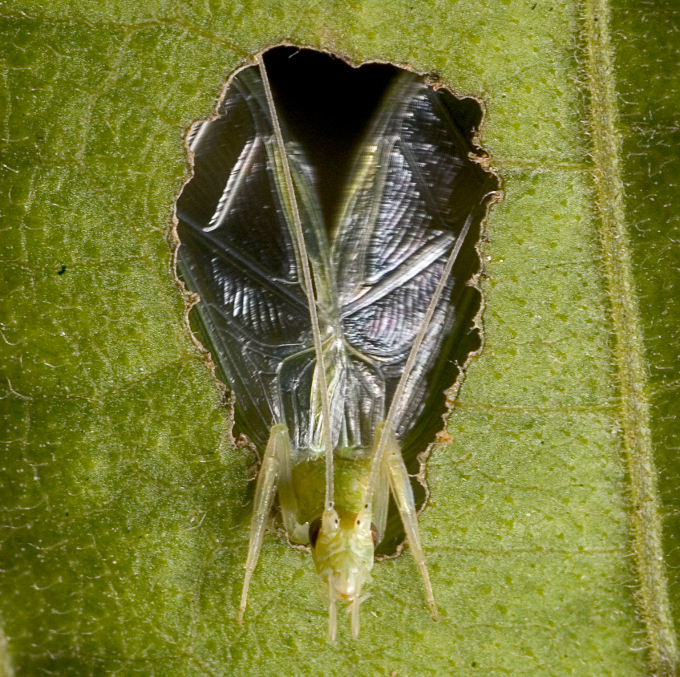Small brains, smart solutions: A new study shows that tree crickets manufacture optimal aids for sound amplification
Thu, 2017-12-21 10:46
A new study published in the journal eLife shows that tree crickets manufacture surprisingly accurate optimal aids for sound amplification. This work was led by Natasha Mhatre (a former PhD student of CES), Rittik Deb (a recent PhD student of CES), Rohini Balakrishnan and collaborators from UK (Robert Malkin and Daniel Robert).
Many insects use sound for finding mates, and one can usually hear them making a racket on warm summer nights. The louder the insect’s advertisement call, the further it travels and the more potential mates it can reach. Only one insect, the tree cricket, modifies and uses an external object to make its sound louder. To make sounds, tree-crickets rub their wings together and set them into vibration. While vibrating, as the wing moves in the forward direction, it compresses the air in front of it, and rarefies the air behind it. Acoustic short-circuiting happens when the compressed and rarefied air meet at the wing edges, mix and the air pressure equalises, cancelling the sound out. The smaller the wings, the larger the sound cancellation effect and the less efficient the cricket’s efforts. To make themselves louder tree crickets make an object called a baffle. To make a baffle, they neatly cut a hole near the centre of a leaf. They then call from inside this hole, with their wings flat against the leaf surface. Baffles reduce acoustic short-circuiting and make the cricket sound louder.
Not all baffles work equally well though, and Mhatre et al (https://elifesciences.org/articles/32763) investigated if male tree-crickets with their tiny brains know how to make the best possible baffles. First they figured out what the best possible baffle was. They measured the wing vibrations and sounds of real tree crickets, and used them to simulate a cricket singing from different baffles. From their simulations, three simple rules emerged that lead to the best baffle: use the largest available leaf, make a hole the size of the wings, and place it at the centre of the leaf. Next, they put the crickets to the test. When offered a choice between two leaves, the tree crickets followed all the rules and produced the best possible baffle: they always picked the larger leaf, made a perfectly sized hole and placed it close to the centre.
The discovery that tree-crickets can optimize the acoustics of baffles reveals the underappreciated abilities of insects in object use and manufacture.
Article: Natasha Mhatre, Robert Malkin, Rittik Deb, Rohini Balakrishnan, Daniel Robert, 2017, “Tree crickets optimize the acoustics of baffles to exaggerate their mate-attraction signal.” , eLife 2017; 6:e32763 doi: 10.7554/eLife.32763
Link: https://elifesciences.org/articles/32763
Editor's Choice by Science: Choosing to Amplify
